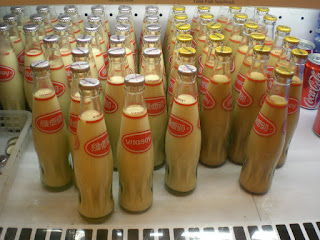Do you know that the wet markets in Hong Kong are called 街市 (“street market”) because in the past, most
of them were set up along the streets?
Allow
me to explain what a “wet market” is, my good sir, if you come from a highly
modernized / urbanized region and never been to place like this before. It is a
marketplace which sells variety of fresh meats and products, like fish,
chicken, pork, vegetables, fruits, dried goods etc. Unlike supermarkets, wet
markets provide fresh and unprocessed goods that usually come directly from the
farms.
That
is correct. Fresh. So fresh that lots of them are still alive. You can still
hear the chicken squawking and see the fish swimming. You even get to see how
the butchers kill them and cut the...
What?
That’s disgusting?
I
concur. And it’s very unhygienic. It’s “wet” mostly because of the water the
shopkeepers used to store fish, or to flush away the trash, or to clean the
blood stain…It’s obviously not an ideal place go, especially during the moist
summer…
However!
It’s welcomed by the older generation and the grassroots mainly because the
stocks they have there are cheaper. And you know how the elders enjoy checking
the status of their food first hand? It would be easier to tell if the meat is tender,
or if the poultry have been fed with chemical products. Moreover, people love
visiting the wet market because they can bargain for a better price and, more
importantly, they get to develop a bond with the shopkeepers. It sure is
comforting to have the acquainted owners to greet you like a friend and provide
what you want every time you arrive. Sometimes they may even give you some
goodies for free! Not a scene you can find in those chained supermarket, right?
While
those big corporations claim how bad the environment is in the wet market and
how wet markets should give in, not everyone think the same. In recent years,
more tourists and nostalgics tend to visit wet market deliberately because they
feel that “this is what the REAL Hong Kong should look like”.
What
is Hong Kong?
A
modern and international city of finance? Maybe.
But
let’s not forget the unique local element: messy, noisy and crowded wet market
where even the poorest can afford, and the loneliest can find warmth.


















